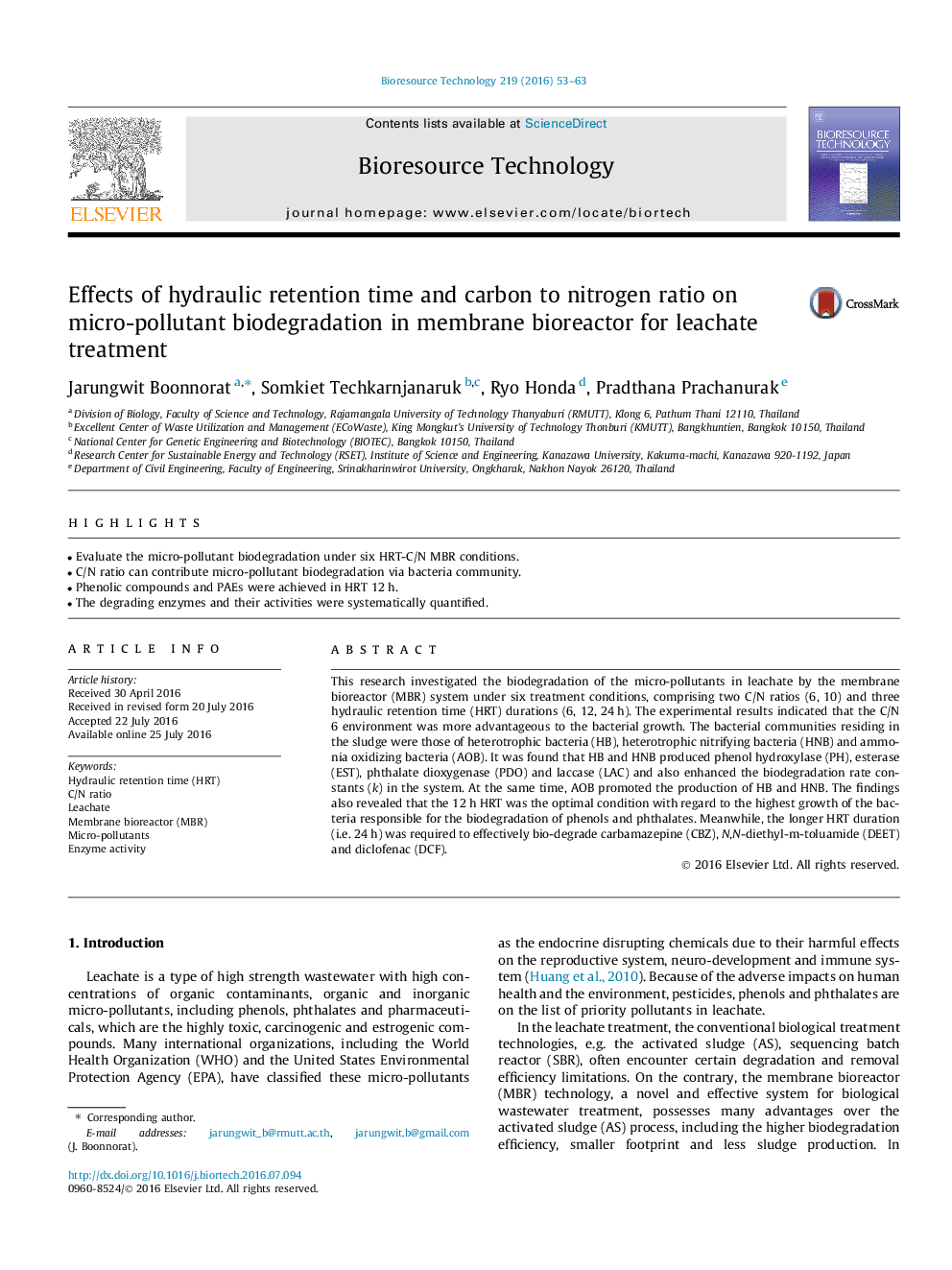| Article ID | Journal | Published Year | Pages | File Type |
|---|---|---|---|---|
| 7069648 | Bioresource Technology | 2016 | 11 Pages |
Abstract
This research investigated the biodegradation of the micro-pollutants in leachate by the membrane bioreactor (MBR) system under six treatment conditions, comprising two C/N ratios (6, 10) and three hydraulic retention time (HRT) durations (6, 12, 24Â h). The experimental results indicated that the C/N 6 environment was more advantageous to the bacterial growth. The bacterial communities residing in the sludge were those of heterotrophic bacteria (HB), heterotrophic nitrifying bacteria (HNB) and ammonia oxidizing bacteria (AOB). It was found that HB and HNB produced phenol hydroxylase (PH), esterase (EST), phthalate dioxygenase (PDO) and laccase (LAC) and also enhanced the biodegradation rate constants (k) in the system. At the same time, AOB promoted the production of HB and HNB. The findings also revealed that the 12Â h HRT was the optimal condition with regard to the highest growth of the bacteria responsible for the biodegradation of phenols and phthalates. Meanwhile, the longer HRT duration (i.e. 24Â h) was required to effectively bio-degrade carbamazepine (CBZ), N,N-diethyl-m-toluamide (DEET) and diclofenac (DCF).
Keywords
Related Topics
Physical Sciences and Engineering
Chemical Engineering
Process Chemistry and Technology
Authors
Jarungwit Boonnorat, Somkiet Techkarnjanaruk, Ryo Honda, Pradthana Prachanurak,
